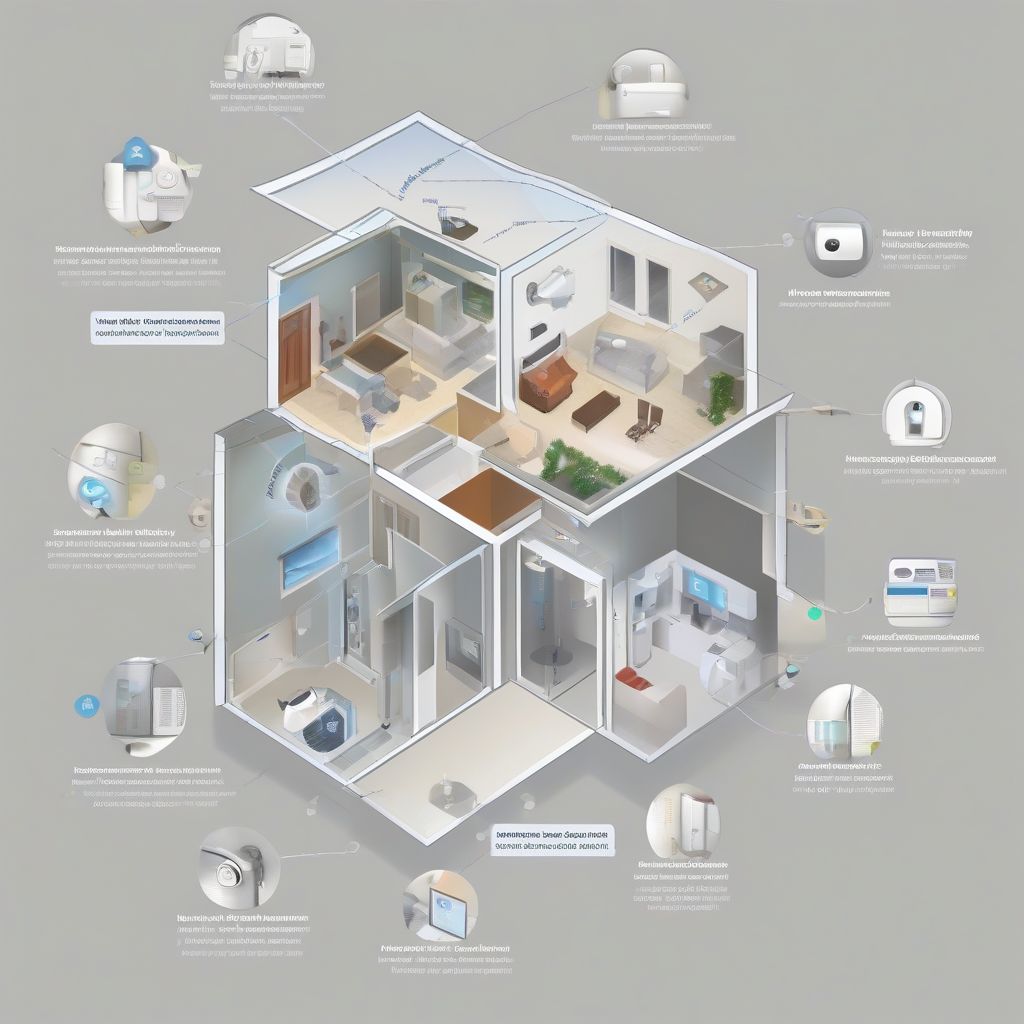Imagine this: you’re lying in bed, about to drift off to sleep, when suddenly you hear a strange noise outside your window. Your heart starts to race. Is it just the wind? Or could it be an intruder? In that moment, a comprehensive home security system wouldn’t just give you peace of mind, it could be the difference between a good night’s sleep and a potential nightmare.
As a nutritionist and meal prep coach, I’m all about equipping people with the tools they need to feel safe and secure – whether that’s through a balanced diet or a well-protected home. And let me tell you, setting up a comprehensive home security system is easier than you might think!
In this guide, we’ll walk through the steps to fortify your home and create a haven of security for you and your loved ones.
Assessing Your Needs and Security Risks
Before diving into the world of sensors, cameras, and alarms, take a moment to evaluate your specific needs and the potential risks your home faces. Consider these factors:
- Your Home’s Location: Do you live in a bustling city center, a quiet suburb, or a rural area?
- Property Type: Are you in a house, apartment, or condo?
- Points of Entry: How many doors and windows does your home have? Are there any weak spots or easy access points?
- Valuables: What items in your home would be most appealing to a thief?
- Lifestyle: Do you travel frequently, have pets, or live alone?
Once you have a clear picture of your security concerns, you can start building a system tailored to your specific needs.
Essential Components of a Comprehensive Home Security System
A well-rounded home security system typically consists of several key components working together seamlessly:
1. Control Panel: The Brain of the Operation
The control panel is the central hub of your security system. It connects all the other components and allows you to arm, disarm, and monitor your system. Look for a panel with a user-friendly interface, reliable cellular backup, and compatibility with smart home platforms if you want to integrate it with other devices.
2. Sensors: The Eyes and Ears of Your Home
Sensors are placed on doors, windows, and motion-sensitive areas to detect any unusual activity.
- Door and window sensors: These alert you when a door or window is opened or tampered with.
- Motion sensors: These detect movement within their range, providing an extra layer of protection for interior spaces.
- Glass break sensors: These listen for the specific sound frequencies of breaking glass, signaling an attempted break-in.
3. Security Cameras: Keeping a Watchful Eye
Security cameras provide visual deterrents and crucial evidence in case of an incident. Consider these camera types:
- Outdoor cameras: These weatherproof cameras monitor your property’s perimeter, deterring potential intruders.
- Indoor cameras: These cameras provide an extra layer of security for your home’s interior.
- Doorbell cameras: These cameras allow you to see and speak to visitors at your door, even when you’re not home.
4. Alarm System: Sounding the Alarm
A loud, piercing alarm is often enough to scare away burglars and alert you and your neighbors to a potential threat.
- Audible alarms: These produce a loud siren sound to deter intruders and notify those nearby.
- Silent alarms: These send a silent alert to your monitoring service and your phone without alerting the intruder.
5. Professional Monitoring: 24/7 Peace of Mind
While you can opt for a DIY system that sends alerts directly to your phone, professional monitoring offers an added layer of protection. When your alarm is triggered, a monitoring center will contact you to verify the alarm and dispatch emergency services if needed.
 Home Security System Components
Home Security System Components
Choosing the Right Home Security System
With so many options on the market, selecting the right home security system can feel overwhelming. Here’s what to keep in mind:
- Budget: Determine a realistic budget for equipment, installation, and potential monthly monitoring fees.
- DIY vs. Professional Installation: Decide whether you prefer the flexibility and cost savings of a DIY system or the expertise of professional installation.
- Smart Home Integration: If you’re a tech enthusiast, choose a system compatible with your existing smart home ecosystem for seamless control and automation.
- Customer Support and Reviews: Research companies thoroughly, looking for reliable customer support and positive user reviews.
Installation and Setup
Once you’ve chosen your system, it’s time to install and configure it.
- DIY Installation: Many systems offer user-friendly instructions and video tutorials, making it possible to set them up yourself.
- Professional Installation: If you prefer to leave it to the experts, schedule an installation appointment with a reputable security company. They’ll ensure all components are correctly placed and functioning properly.
Tips for Maintaining Your Home Security System
To keep your system in tip-top shape:
- Regularly Test Your System: Test your alarm system, sensors, and cameras monthly to ensure everything is working correctly.
- Change Batteries Regularly: Replace batteries in sensors and other battery-powered devices according to the manufacturer’s recommendations.
- Keep Software Up-to-Date: Regularly update your system’s software to benefit from the latest security features and bug fixes.
- Secure Your Wi-Fi Network: Use a strong password for your Wi-Fi network to prevent unauthorized access to your security system.
Conclusion
Just like a nutritious diet strengthens your body, a comprehensive home security system strengthens your peace of mind. By following the steps outlined in this guide, you can create a safer, more secure environment for you and your loved ones. Remember, a well-protected home is a happy home.
If you have any questions or need help choosing the right security system for your needs, feel free to leave a comment below. Let’s work together to make your home a haven of security and peace of mind!
[amazon bestseller=”home security systems”]
